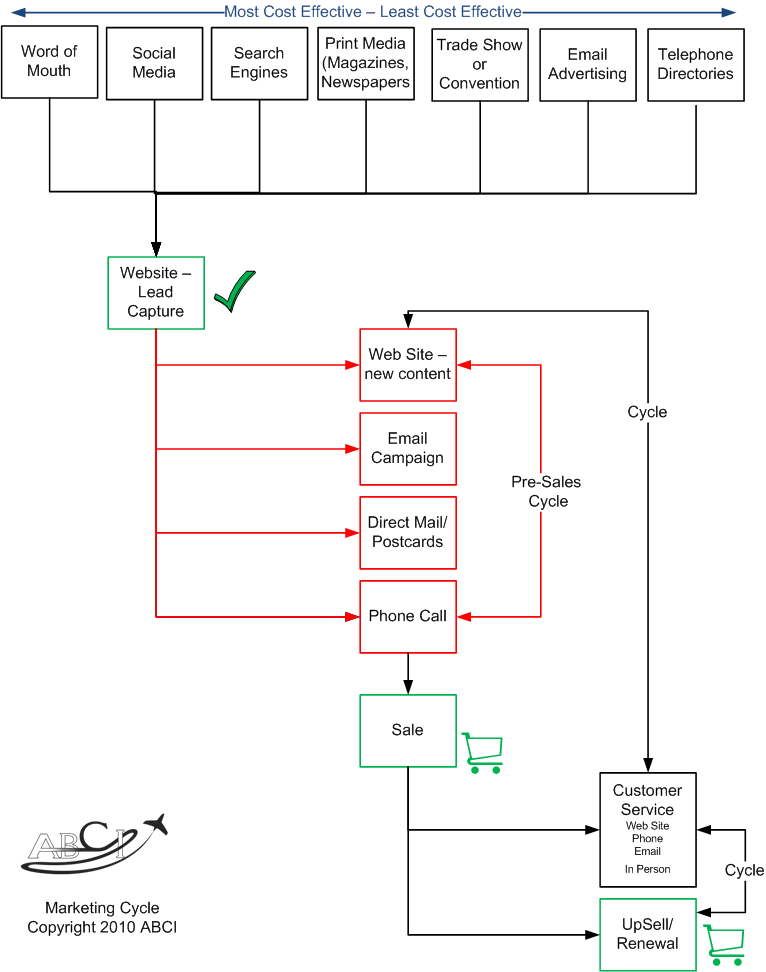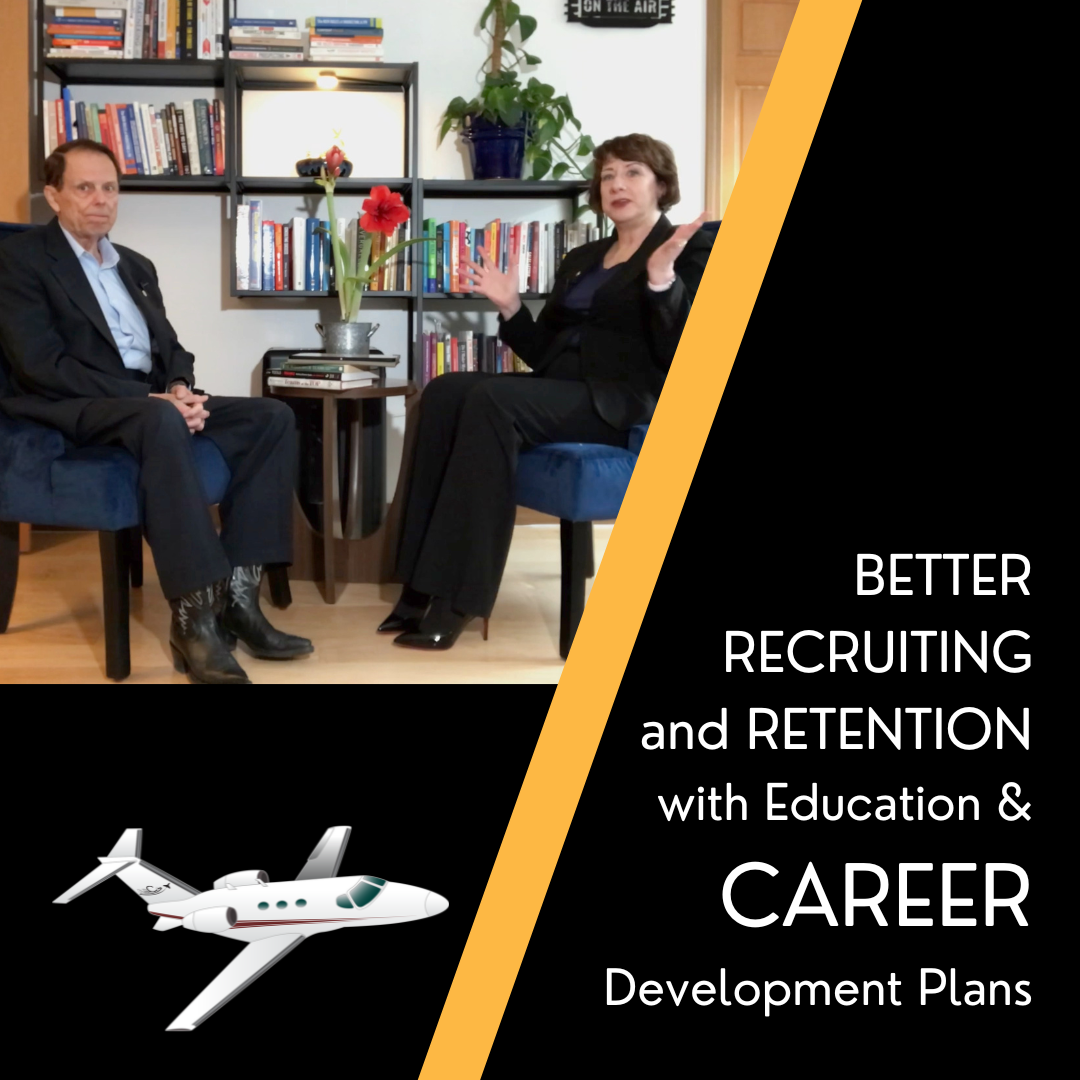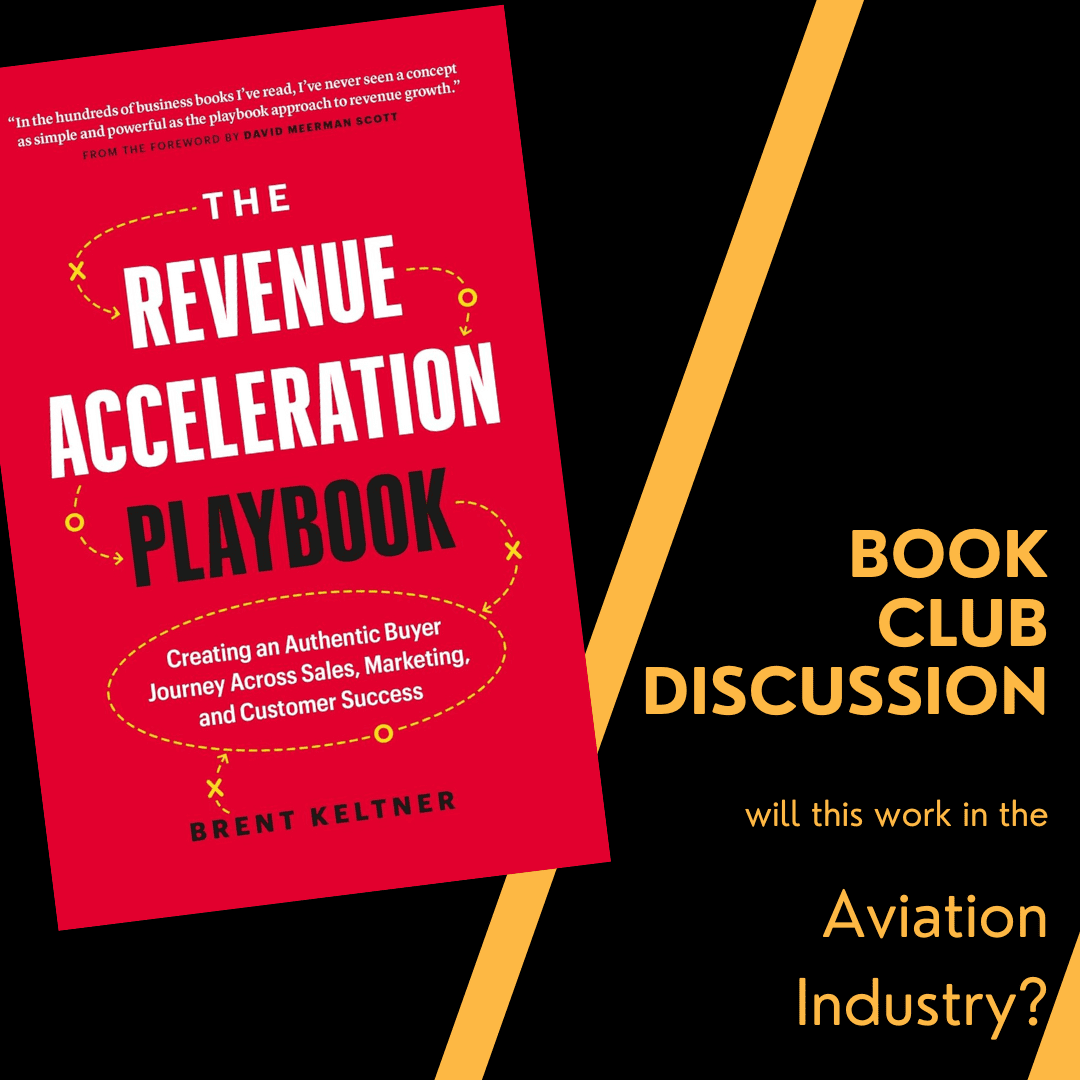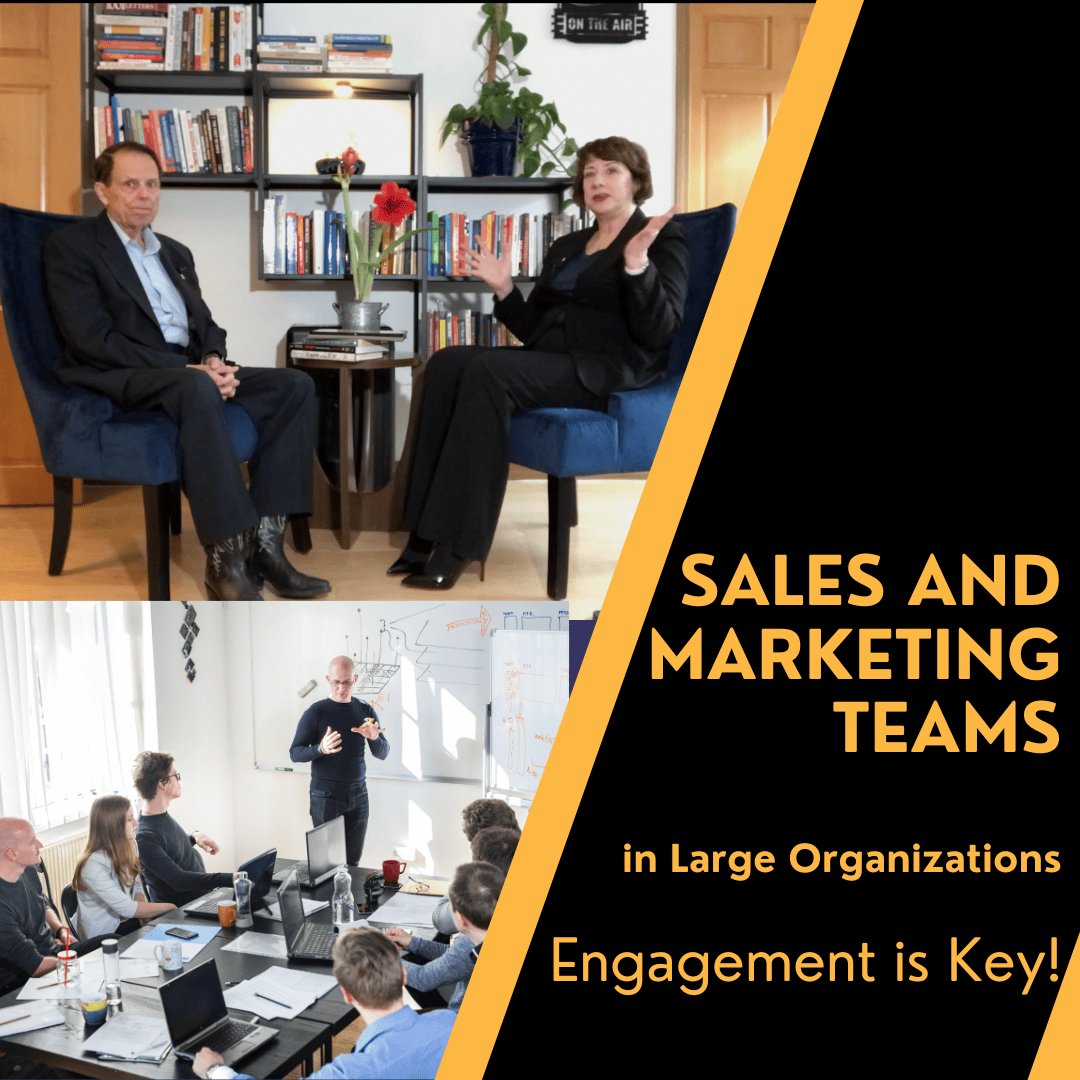I don’t believe in love at first sight.
In fact, I had known my husband for 10 years before we got married. We were engaged for more than a year. And he’s a really phenomenal guy!
Most people that would buy your products or services, especially in this economy, also don’t believe in love at first sight. Aside from candy at the checkout counter (although I understand candy sales are down as well!) the “impulse buy” seems to be pretty much extinct.
This doesn’t mean that customers are cynical, it just means that they consider purchases very carefully before they spend money. They want to do their homework and consider every purchase very carefully. Unfortunately, they’re also very busy and don’t have time to spend doing the extensive research that would make them comfortable with a purchase. This is true of most industries, and even more so in aviation. Given the demographics and psychographics of people in this industry, they didn’t get where they are (and stay successful in a very competitive, passionate business) without being very smart and discriminating.
Even if you have a product that’s neater than sliced bread, or a service that you think your potential customer can’t live without, please think again. They’ve lived without it until now, and they’re probably not going to make a different decision overnight.
So, how do you get these smart, discriminating customers to “fall in love” with your product or service? You take your time. You make information available and convenient, and you put together a long-term, sustained marketing plan that brings you to the front of their mind on a regular basis without making a pest of yourself.
Most people that contract with me for marketing services take a minimum of three weeks from the time I meet them to the time we get started on a project. And more often, it takes a couple of months. Some customers have known me for years before they hire me. (Which is not to say that I don’t make a pest of myself, you’d have to ask them about that.)
A person finds out about your company through your website, a social media connection, a trade show, or some other means. Then there’s some amount of time during which the customer is not yet ready to buy, for any number of reasons – he could be waiting for a decision from superiors, or looking for more information, or wanting to shop around before making a decision. Or they’re just too busy with other things.
In any case, during this timeframe (whether it lasts days, weeks or months) there is a danger that your prospective customer will forget about your brilliant website or the scintillating conversation they had with you at a trade show. Other priorities will encroach on their time, their attention, and their budget. And they’ll forget all about you and your product or service.
If I’ve done a consultation for you, or if you’ve taken a marketing class, you’ve seen some variation of the following diagram.

In this model, there is a Pre-Sales Cycle. You could also call this “Post-Contact Follow Up.” You can call it anything you like, but whatever you call it, you should be performing some tasks to continue your contact and build a relationship.
Secrets of Great Follow Up Timeline for Sales
Use Different Media.
Since I specialize in online marketing, I would love to say that you can run a complete marketing campaign online and never have to do anything else. Sometimes, for some projects, that may be true. But ANY marketing plan will benefit from some off-line contact. Mix it up.
- Email – This can include a well-written sales letter, a newsletter, or video explaining more about your product. Using an effective programmed series of emails can deliver information in digestible chunks and ensure that you’re at the front of the list when your prospective customer is in the market for your product or service. The key to successful email marketing (and what separates your emails from run-of the mill SPAM) is that your messages need to be thoughtfully targeted and full of valuable information that your potential customers will find useful whether or not they buy your product or service.
- Web Site Content – If your customer subscribes to your news feed or RSS, adding more content to your blog might serve this function and keep him apprised of new developments with your product; provide case studies of how another company is using it, or valuable industry information.
- Postcards – There are still a lot of people who subconsciously (or consciously!) think that a company isn’t real unless they have had some contact with that company that occurred somewhere other than cyberspace. It makes your company seem much more “real” if you send a tangible piece of mail. I like postcards because a well-designed postcard can be a very efficient and effective reminder without being expensive.
Make it Regular but Not Intrusive
We’ve all had the pleasure of dodging phone calls from an overzealous salesperson who calls three times a week. That’s irritating, and it doesn’t work. I suppose there are things to be said for phone calls, but since they interrupt your prospective client’s day and demand his immediate attention, I think they should be used very, very sparingly, especially in the pre-sales follow up stage.
Here’s a sample timeline that includes quarterly postcards, a product-related informational email (perhaps a tutorial or new feature announcement) and a monthly emailed newsletter.
Your plan will be different, depending on the product or service that you’re selling and the schedule that matches your style.
Make It Easy
You don’t have time to write a newsletter, or supervise a print run of postcards once a month, or even fetch stamps and keep track of all these lists.
If it’s not easy, it doesn’t get done.
We recommend automating everything that can be automated.
- Email systems like Constant Contact or MailChimp allow you to set up an autoresponder, which is a system that sends scheduled emails by a predefined schedule. After you’ve added a contact to your list, (or your contact has signed up on your website) the system takes care of sending your emails on a predefined schedule.
- Postcard systems like SendOutCards will allow you to design postcards from any computer. You can import your contacts and schedule postcards to be sent out on a schedule you determine. I generally send a postcard right after meeting a prospective client for the first time, (it might be waiting in their mailbox when they get home from a trade show or conference) and then on a predefined schedule. A postcard also doesn’t have to be opened to be effective, and many people don’t open mail unless they’re expecting it. (Or unless the envelope is remarkable in some way, which is usually much harder and more expensive to do.)
So, now you have some great tools and know how to improve your sales by mastering the art of follow-up, rather than expecting your customers to fall in love with your products or services at first sight!
.







Excellent information !
Thanks very much, John, and thanks for taking the time to say so!
At your service if you have any questions.
-Paula
Dear Paula,
thanks a lot for your extremely interesting and useful article.
I have forwarded it to all employees at my company and asked everyone to read carefully
and apply in practice.
Cheers
Vadim Smelianskiy
Thanks for the kind comment, Vadim!
Best wishes to you, and let me know if I can be of assistance.
-Paula
Fantastic article Paula with some great, actionable tips that are extremely practical for us in the industry who are challenged with bandwidth issues as we try to do more with less resources. We have had great results with AmazingMail for quick-turn, automated mailing solutions… and have been fortunate to find that they have an aviation-industry account rep that is familiar with our unique challenges! I am curious on your thoughts on what should control the lifecycle for prospects and retention… CRM system? Hybrid? I know some CRMs can be high in price and low in ROI… but some may not. What do you recommend?
Hey Ryan!
Good to hear you.
Nice to know about Amazing Mail – I’ll have to look into that one.
CRM systems are getting better, SalesForce is my favorite, but like most of my favorite things, it’s expensive. Definitely worth it for companies that can afford $125 per user per month.
I hear they’ve recently released their SalesCloud Contact Manager product at $5 per user per month. Since that change I’m not familiar enough with the limitations of that product to recommend it, though. For the time being, I work with whatever my customer has (or doesn’t have.)
Many small companies do just fine with ACT or the business contact manager that comes with Outlook Professional.
I need to do some more research in my spare time 🙂 What do you think?
Hi Paula! Spare time? What is that… I have heard about it in legend, but never have seen it in real life! Ah the all-encompassing blanket of marketing!
I have heard some good stuff about the web-based CRM HighRise from 37signals http://highrisehq.com/ mostly from the fact that they have direct API support for MailChimp and quite a few other add-ons that help feed the inbound lead, follow-up, and business productivity side of the house for small businesses. We recently went over to MailChimp for our ESP and have seen a dramatic increase in delivery rates, opens, and now have fantastic reporting and easy creation to boot… so I highly recommend MailChimp as well!
New media is key. Old methods give you same results. New media allows you to stand our as a brand.
Ryan,, HighRise has a great set of tools as CRM and you can combine stats with other systems like youcalc..
Paula – I like the way you present in words and put in pcitures/diagrams- I read your articles because they are interesting and easy to read..thanks
Thanks Ian! Glad to have you reading/posting!
[…] Have a plan to follow up. Many companies invest a lot of money in acquiring leads at trade shows and amass a huge fishbowl of business cards or a huge spreadsheet of captured leads from badges. Some send a single postcard, but most don’t have a comprehensive follow up program that uses multiple media to vet those leads and turn a good percentage of them into sales. If you have a good follow up process, enter your new leads immediately. If you don’t have a good follow up process, now’s the time to create one. See Improving Sales by Mastering the Art of Follow Up […]
Really,aviation industry is one of the profitable industries today which is characterized by of rapid technological and marketing changes. Nevertheless, the present situation requires cooperation between airlines and airports which should help them to market their services effectively to their clients.
Mcx Tips
[…] Have a plan to follow up. Many companies invest a lot of money in acquiring leads at trade shows and amass a huge fishbowl of business cards or a huge spreadsheet of captured leads from badges.You know how frantic it is when you get back to the office after a trade show – besides following up on leads, you also have to catch up on all the phone calls and business you missed while you were out of the office. If it’s a pain in the neck to do it, it won’t get done, so it’s important to automate this step with a good program like InfusionSoft or SendOutCards (we use both.)Some companies send a single postcard, but most don’t have a comprehensive follow up program that uses multiple media to vet those leads and turn a good percentage of them into sales, so you’ll stand out if you do a decent job of follow up! If you have a good follow up process, enter your new leads immediately. If you don’t have a good follow up process, now’s the time to create one. See Improving Sales by Mastering the Art of Follow Up […]
Thank you for this useful information.